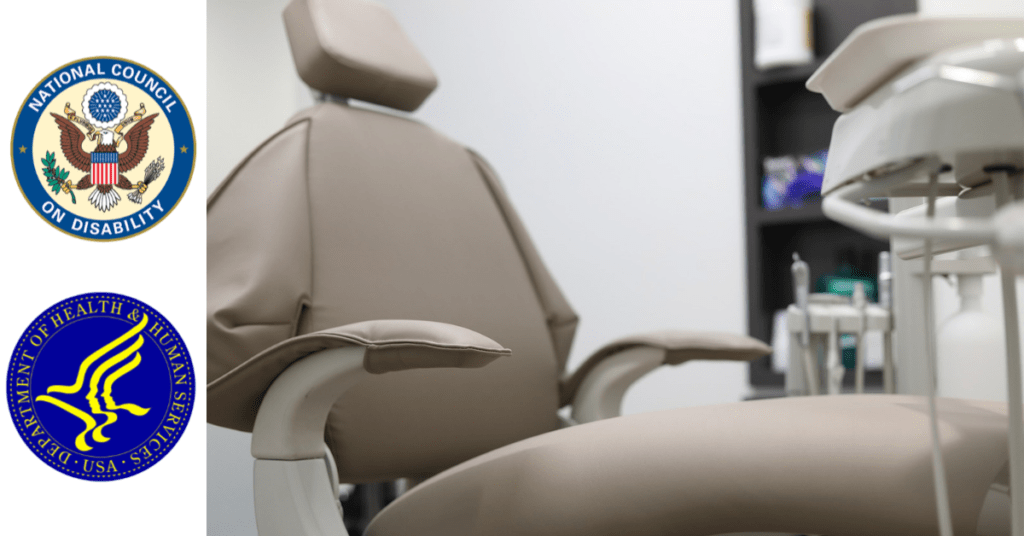Small Offices Create Big Inclusion Problem in HHS Proposed Rule Change
Henry Ford once said, “There are no big problems, just a lot of little problems.” Certainly, when we dissect a large challenge into smaller parts, we can often find a way to overcome it. But sometimes, the small parts are themselves the bigger problem. This is illustrated by a recent letter from the National Council on Disability (NCD) to the U.S. Department of Health and Human Services (HHS).
On September 7, 2023, the HHS issued a “proposed rule to advance equity and bolster protections for people with disabilities.”
The proposed rule is called Discrimination on the Basis of Disability in Health and Human Service Programs or Activities, and it is meant to clarify and strengthen regulations in the Rehabilitation Act of 1973 (section 504). Section 504 prohibits discrimination on the basis of disabilities in programs that receive federal financial assistance.
According to the HHS, this “historic proposed rule” will provide robust civil rights protections for people with disabilities. The protections will be in effect whenever they interact with health and human services that are receiving federal dollars. This is potentially great news for accessibility and treatment options in the medical environment.
But are these “historic” protections overlooking a major disability inclusion problem still present in the original rules?
Small Offices are a Big Problem
This is one of the ‘small problems’ mentioned by Claudia Gordon, Vice Chair of the NCD, in a letter to the HHS on November 13th. While we can expect varied opinions on large federal rule changes, the existing rules regarding small medical offices cannot be ignored. In particular, the HHS has proposed to retain § 84.22(c) in the 504 regulation. This section applies to accessible Medical Diagnostic Equipment (accessible MDE).
Ms. Gordon points out a big problem with § 84.22(c), writing, “NCD strongly opposes retaining § 84.22(c) because it will functionally exempt the majority of physicians’ and dentists’ offices from the obligation to acquire accessible MDE.”
How important are accessible MDE’s? They can mean your life. As noted by Ms. Gordon, a “lack of accessible MDE contributes to a lack of preventive care that is necessary for early diagnosis of diseases and has been linked to poor health outcomes, poorer quality of life, and shorter length of life for people with mobility disabilities.”
Under the current rule, medical offices of 15 or fewer employees are exempt from acquiring and providing these accessible MDE’s. But, why is the NCD concerned about smaller offices?
The numbers don’t lie, and the NCD letter reveals a sobering lack of medical accessibility under the current rule. Ms. Gordon explains: “If § 84.22(c) is retained and applied to the accessible MDE requirements, about 154,000 of 168,459 physician’s offices and about 48,000 of 124,384 dentists’ offices could claim that providing any accessible MDE – even one exam table, one weight scale, one examination chair – would be too great of a burden.”
“Lack of accessible MDE contributes to a lack of preventive care that is necessary for early diagnosis of diseases and has been linked to poor health outcomes, poorer quality of life, and shorter length of life for people with mobility disabilities.”
That means that currently, 91% of doctors offices and nearly 40% of dentist offices receiving HHS funding are not under obligation to provide well-known diagnostic care for people with disabilities.
Even worse, how many people with disabilities are simply turned away by offices that receive the federal money that was intended to improve their treatment?
Overall, Ms. Gordon and the NCD generally seem to agree with HHS’s efforts to protect people with disabilities. But the suggestion by the NCD to make medical facilities and equipment more accessible while maintaining health standards is a no-brainer.
These suggestions underscore the importance of equal healthcare access for individuals with disabilities, regardless of the size of the healthcare facility they visit. This ‘small office problem’ should not be allowed to create a much bigger problem for people with disabilities.
For more information, please click below:

